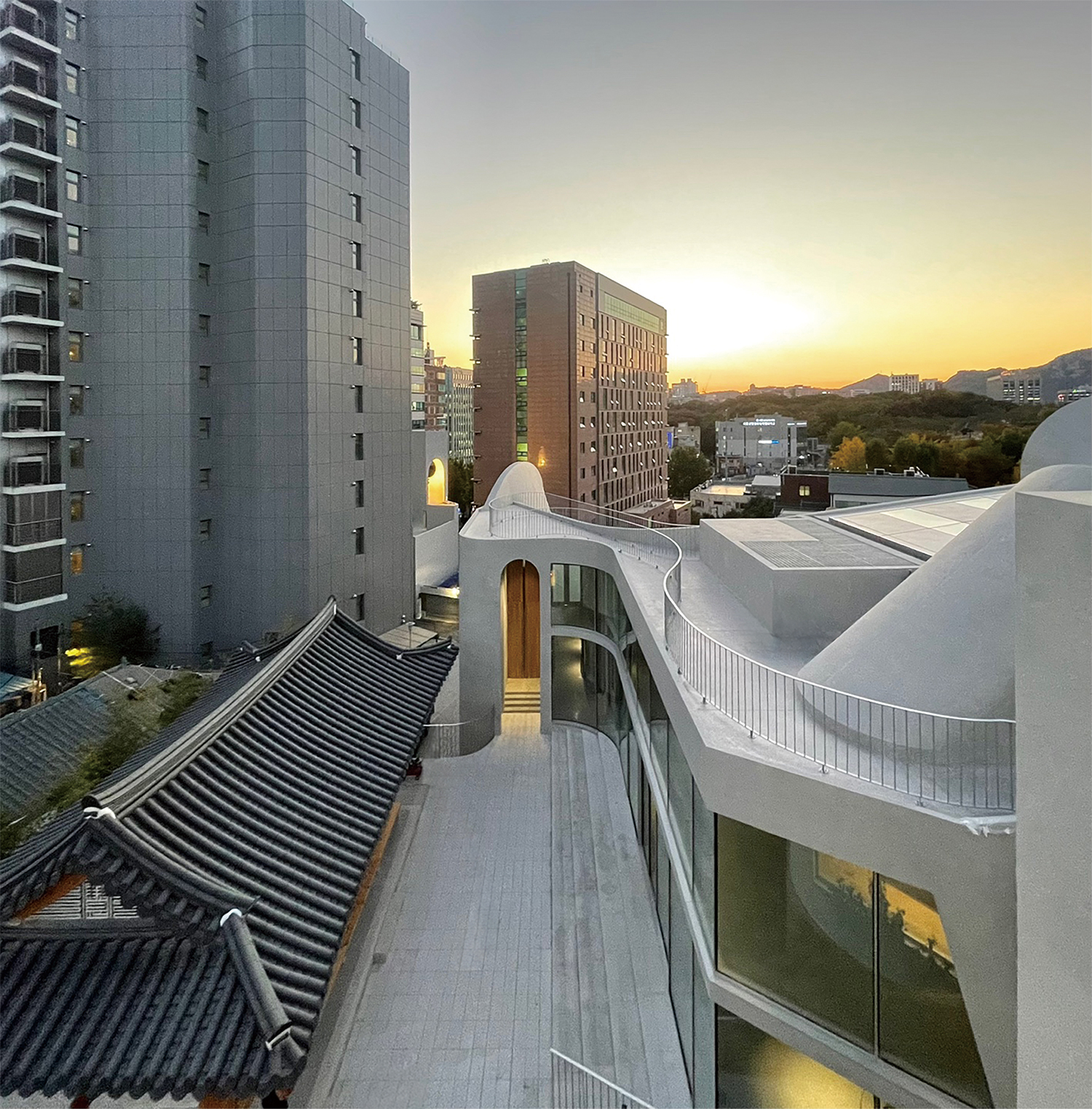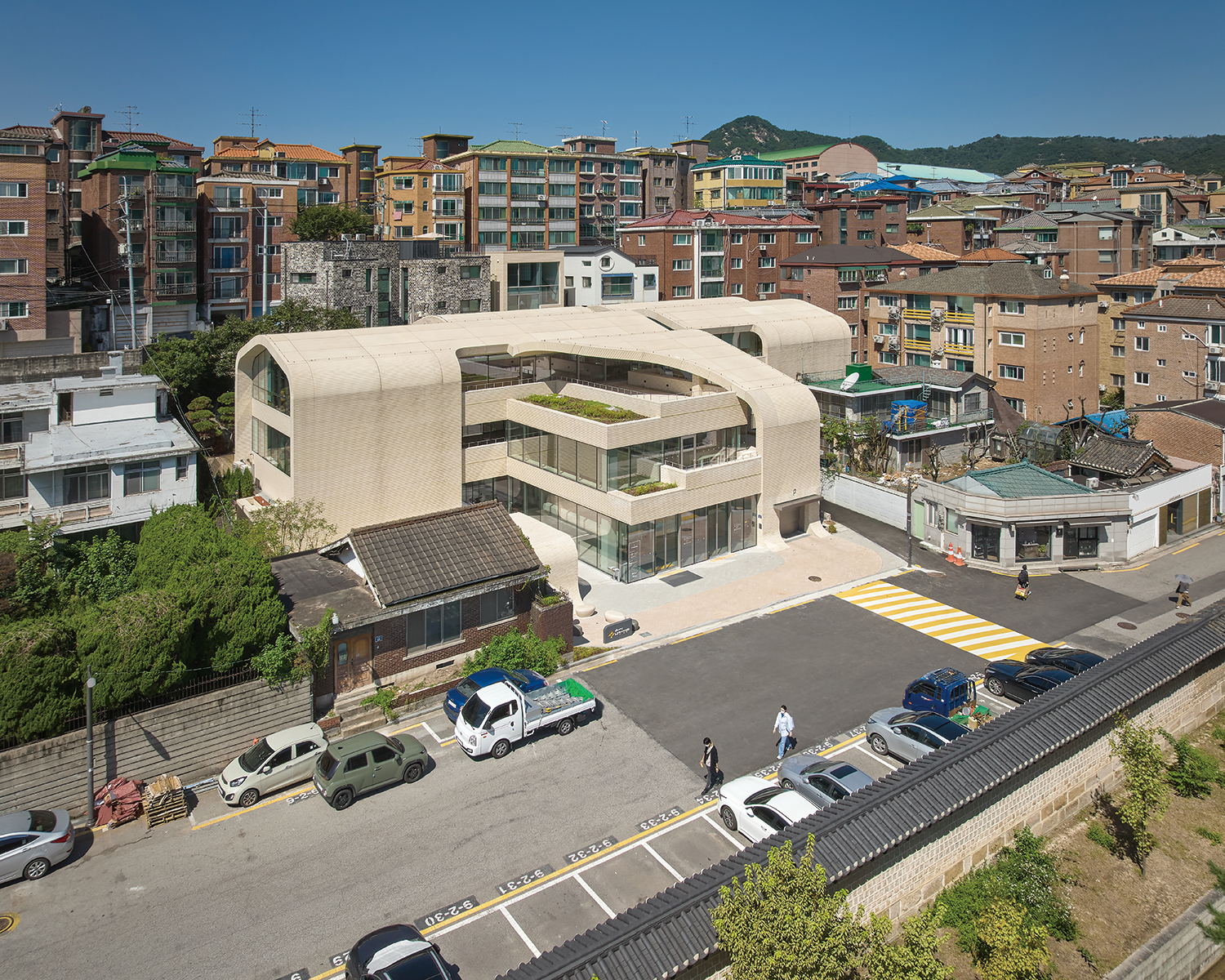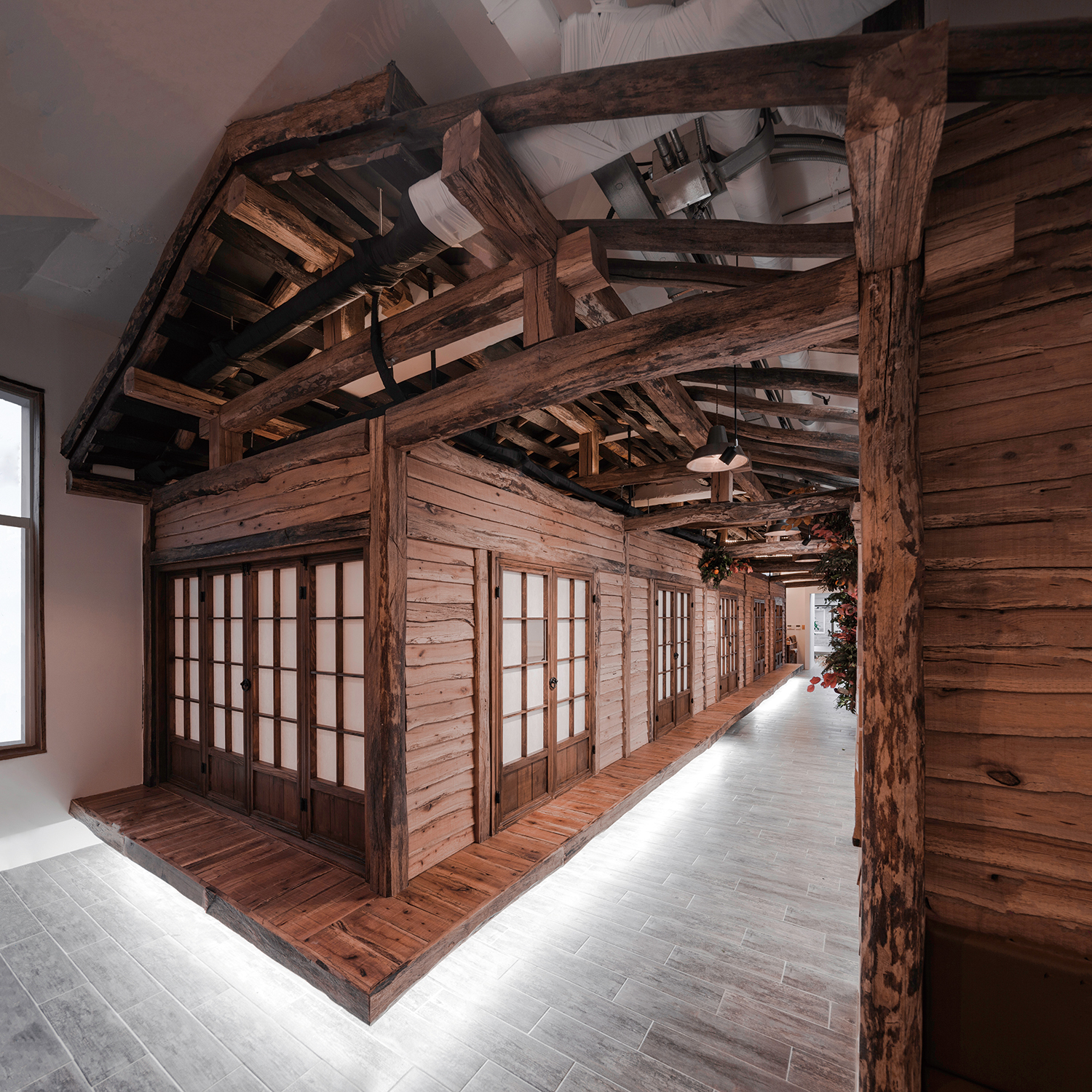SPACE December 2023 (No. 673)

Won Buddhism Wonnam Temple ©MASS STUDIES

Roh Moo-hyun Civic Center ©Roh Kyung

Jejubuk Elementary School Kim Youngsoo Library ©Yang Taeyoung
On Nov. 4, the 5th Korea Association for Architectural History Architecture Award Candidates Discussion was held at the Sangsang-hall of Seoul National University of Science and Technology and broadcast live on YouTube simultaneously. Three works out of 17 nominations were selected: Roh Moo-hyun Civic Center by WISE ARCHITECTURE (co-principals, Sook Hee Chun, Jang Youngchul); Won Buddhism Wonnam Temple by MASS STUDIES (principal, Cho Minsuk); and Jejubuk Elementary School Kim Youngsoo Library by Tamrajiye Architects (principal, Kwon Jeongwoo).
The first presentation on Roh Moo-hyun Civic Center was given by Do Younjung (principal, Huam Architecture Laboratory) who focused on how the Roh Moo-hyun Civic Center did not simply adopt the form of a memorial hall but rather was designed in line with public projects with user-oriented programmes developed under the core values of democracy and improved communication. In contrast with previous memorial halls that prioritised form and overwhelming spatiality to evoke a sense of dignity and respect, Do emphasised how Roh Moo-hyun Civic Center’s exterior envelops the differently-sized boxes that contain various user-oriented programmes. Do also claimed that the exterior envelope design that climbs up the wall captures the concept of a boundary-less architecture and the idea of restoring the hilly topography of the past to great effect.
This was then followed by a presentation by critic Hyun Myungseok who explained how the historical significance of Won Buddhism Wonnam Temple goes beyond the building itself and resonates with the architectural record of Cho Minsuk’s past which reflects the changes in the Korean architectural narrative. Drawing upon Rem Koolhaas’ concept of ‘Bigness’ to show how reference materials are combined into new forms, and by reflecting on how Cho Minsuk – who rose to prominence after the 4.3 Group and the architects of Kim Swoo Geun’s time and modern era – also used and combined references to create new architectural possibilities, Hyun argued that this can also be observed from Cho Minsuk’s Won Buddhism Wonnam Temple. Hyun praised the way in which the temple’s shape is not just a shape but an architectural form that has resulted from responding to the diverse variabilities within the old urban context.
The final presentation by Kim Youngcheol (professor, Pai Chai University) praised Jejubuk Elementary School Kim Youngsoo Library for repurposing an elementary school library as a town public library in response to the decline of the original Jeju city centre, thereby expanding Jeju’s regional and historical assets. Jeju Mokgwana – which was the administrative center of Jeju Island during the Joseon Dynasty – used to be in the region, a façade that overlooks the landscape and a new hanok was added to the library during its renovation stage.
During the panel discussion which came after the presentations, various lines of discussion were raised, such as the extent to which the term ‘plaza’ continues to draw its meaning from democracy was expressed in architectural terms through the Roh Moo-hyun Civic Center, the precise kind of urban and architectural challenge Won Buddhism Wonnam Temple may pose as a religious facility, and whether the new addition of the hanok to the Kim Youngsoo Library is more than just a simple return to tradition.





